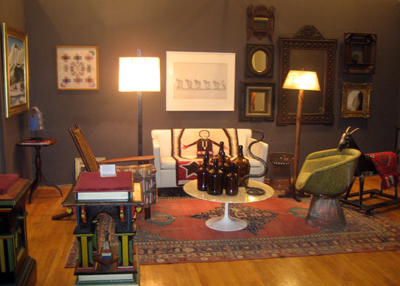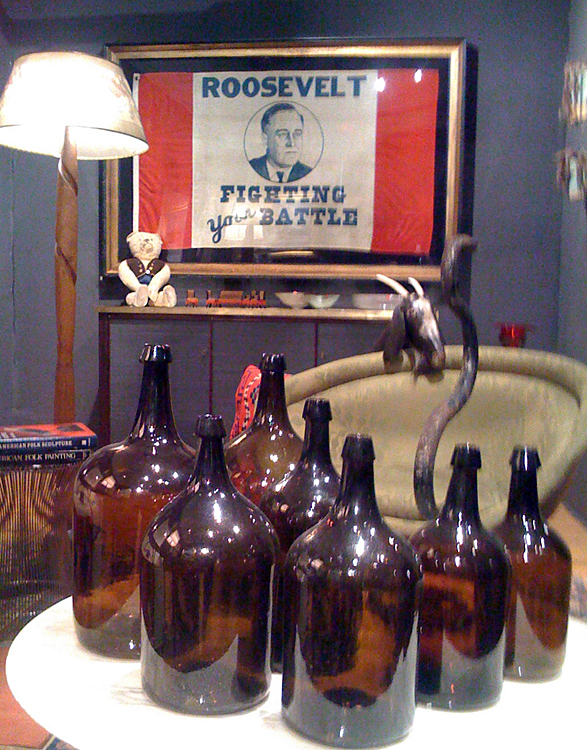
Now in its eighth year, the American Antiques Show, a major fundraiser for the American Folk Art Museum, remains a highlight of Americana Week in New York. The forty-seven dealers who set up in the Metropolitan Pavilion January 22-25 exhibited some of the finest examples of American folk and outsider art from the 17th to the 20th centuries.
This year the Magazine ANTIQUES made its first appearance at the show with “The New Americana,” a room set up near the entrance of the show and styled by artist and designer Judyth Van Amringe. The starting point for the room was a selection of modern pieces by Knoll Inc. and Roman Thomas chosen by Van Amringe and Jennifer Norton, the magazine’s publisher. Van Amringe then went around to the exhibitors’ booths and borrowed antiques to harmonize with the modern décor.
The idea, according to the magazine’s editor, Elizabeth Pochoda, was to demonstrate the versatility of folk art, to show that “just because these objects are museum worthy doesn’t mean they need to be confined to period rooms.” And so, a tall bronze serpent from Just Folk slithered among a collection of large brown mold-blown bottles from Jeff & Holly Noordsy on the marble top of Eero Saarinen’s iconic Tulip coffee table, designed for Knoll in 1956. A late-nineteenth century wooden goat on wheels, also from Just Folk, originally the property of a fraternal order, rested its bearded chin on the edge of a sleek Warren Platner chair covered in a light green damask from the ultra chic fashion house Proenza Schouler. In the corner of the room, a porch chair from Cherry Gallery looked quite at home next to another modern piece, a 1968 Pijuan standing lamp of forged steel and hand-stiched paper from Roman Thomas. On the walls, a FDR campaign flag from Jeff R. Bridgman American Antiques shared space quite compatibly with two leather and horse hair Navajo facemasks from David Cook Galleries.

Van Amringe lined part of the back wall of the room with tramp art frames from Clifford Wallach. She placed a heart-shaped wall pocket, also from Wallach, inside one frame and it became the first item purchased from the ANTIQUES room. Ricco Maresca contributed an old drawing of a Coney Island carousel, and even fine art made an appearance with a small, charming oil painting of a waterfall by Hudson River School artist John Williamson (1826-1885) from the booth of the Cooley Gallery.
Like “The New Americana” room, the atmosphere at the American Antiques Show was lively enough to encourage discussions between different eras and widely diverse objects as well as between the dealers and visitors.
